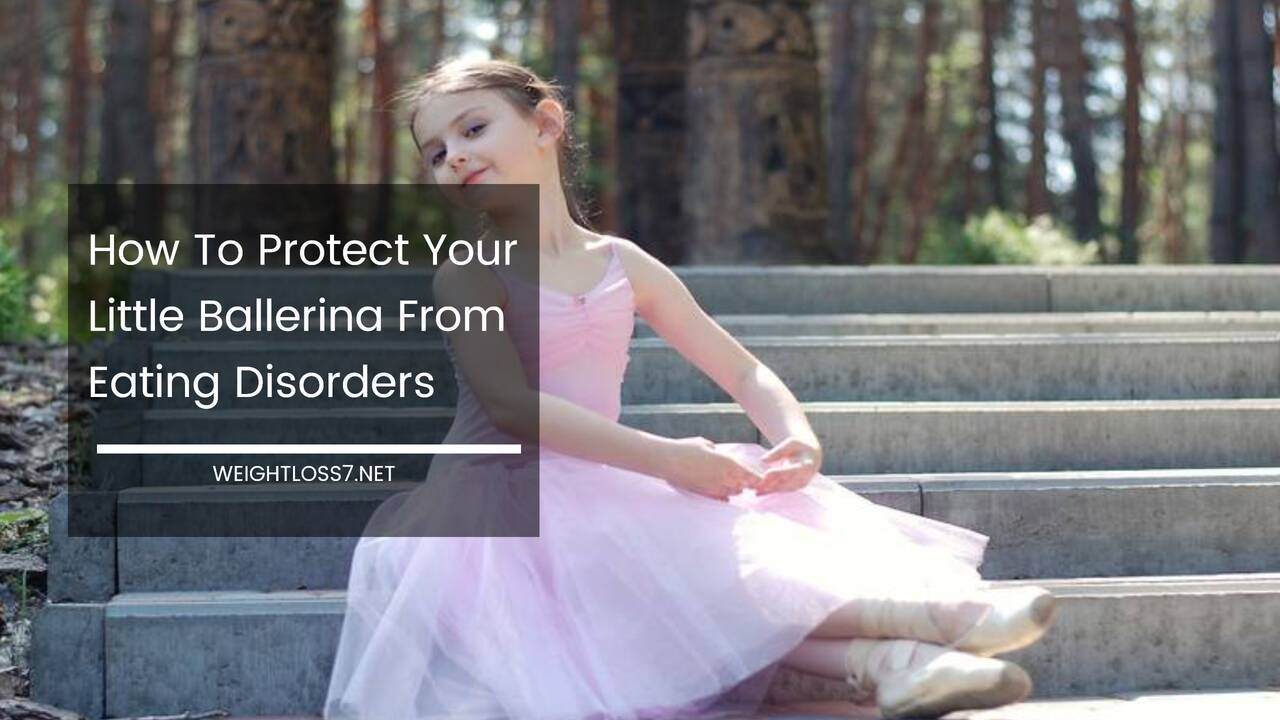How To Protect Your Little Ballerina From Eating Disorders

Somewhere in the world, a little girl is tirelessly practising her pliés and tendus in the hope that one day she will grace the stage like Darcey Bussell or Sylvie Guillem.
Ballet mistresses glide between the barres with watchful eyes, performing corrections with only a hint of censure.
Wide-eyed and concentrating furiously, it is only much later that she will hear terms like ‘overweight’ and ‘self-discipline’ whispered through the corridors of her school.
Countless stories have emerged from former dancers who speak of strict dietary regimens, daily weigh-ins and subtle hints about becoming too big to dance.
They speak of the constant pressure to be thin, the fear and worry about gaining weight or developing the wrong type of body and the competitiveness between the students.
Yet despite the emergence of these stories, ballet remains popular and continues to draw students eager to learn the art.
Does Ballet Cause Eating Disorders?
It’s true that ballet, more than any other form of dance, demands a certain body type to become successful.
Long, lean legs, long necks and petite bodies are becoming the favoured physique and so ballet schools respond in kind, selecting those children who have the greatest chance of succeeding in a driven world.
Like all sports, an obsessive approach to maintaining good health is taken in ballet.
The difference is that while ballet dancers have to be strong enough to perform the rigorous and demanding moves, they also need to maintain the ideal physique, requiring them to have exceptionally low body fat percentages.
However, it is not fair to say that ballet causes eating disorders. Not all ballet dancers have eating disorders and many are extremely healthy and strong.
Not only that, but to dismiss this form of dance as causing eating disorders would be to dismiss an art that many explore in a safe manner and find extremely fulfilling and rewarding.
The danger comes with being exposed to teachers and schools that apply the pressure to be thin. Like with most activities, good training comes down to the teachers you choose and the self-discipline you apply.
Choosing the right teacher is of paramount importance – or your child could experience serious injuries and face the never ending pressure to be thin.
How To Help Your Child
Since most dancers begin ballet when they are very young, parents play an important role in protecting their child from the dangers whilst allowing them to experience the joy of ballet.
It is important to do your research beforehand and find a school with teachers who hold qualifications or professional experience in dance and whose attitude to dance emphasises safety.
When you visit the studio, try to visit just before the class ends so you can talk to the other parents about their experience at the studio. Watch the class to see whether the teacher is encouraging and supportive instead of merely demanding and critical.
The corrections he or she provides are extremely important and therefore it is critical that the class is not too big – this allows for personalised instruction.
Watch the students and see if they seem happy and fulfilled, and if there is a sense of camaraderie amongst the older students.
Mostly, though, it’s about sensible parenting; be on the lookout for early warning signals like skipping meals, negative self-talk and increased body consciousness.
Above all, make sure you maintain an open line of communication with your child and make sure you provide a healthy diet and plenty of reassurance.

















